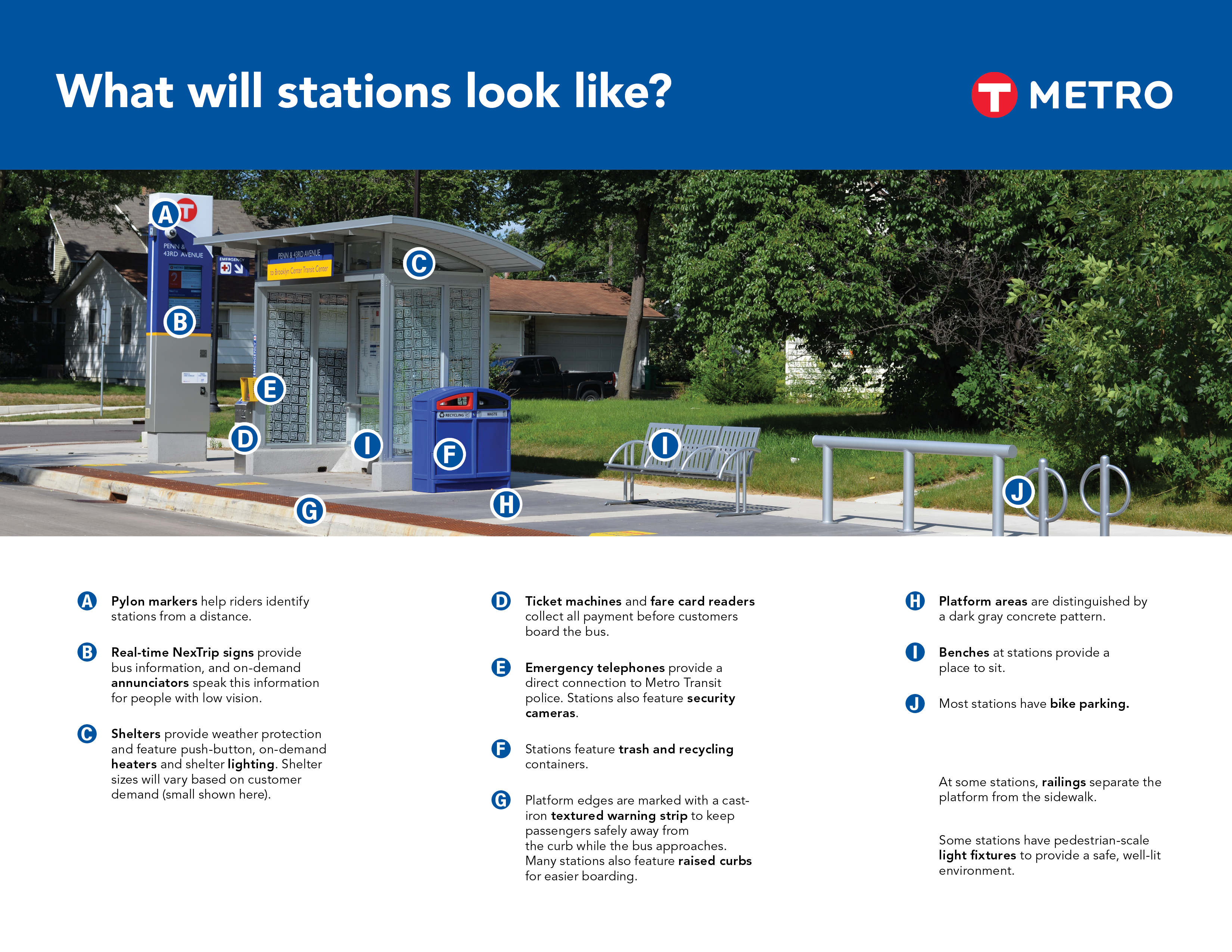Frequently Asked Questions
What is the METRO G Line?
The METRO G Line is a planned bus rapid transit (BRT) line, that will provide faster and more reliable transit service. It will serve the Route 62 and Route 68 corridor along Rice Street and Robert Street. The G Line is planned to be the sixth arterial BRT project within the Twin Cities. The A Line, B Line, C Line, D Line, and E Line are already in service. The F Line and H Line are also planned to begin service before 2030.
Why was the Rice Street and Robert Street corridor selected for bus rapid transit service?
In 2019, Metro Transit launched Network Next, a 20-year plan to expand and improve the bus network. In 2020 the project focused on identifying the next arterial BRT lines. Nineteen potential arterial BRT corridors were studied. Ridership, equity, and cost were factors considered. Based on feedback from public engagement, the Route 62 and Route 68 corridor was recommended for near-term implementation. In March 2021, the Metropolitan Council acted to name the Rice Street/Robert Street corridor as the METRO G Line.
How much faster will G Line service be compared to Route 62 and Route 68?
The goal of the G Line is to make service about 20% faster than current travel time. G Line buses will stop less often, have faster boarding, and stop at fewer red lights. Similar travel time improvements have been achieved on the A Line, C Line, and D Line.
What will be the G Line hours of service and frequency?
The G Line will provide high-frequency service throughout the day and most of the evening. Buses arrive at stations often, so customers don’t need a schedule to plan their trip. Frequent service is also provided on nights and weekends. Exact schedules and service plans will be determined through project development.
What will G Line buses look like?
G Line buses are designed for a comfortable ride. Wider aisles make it easy to move around the bus. Buses have wide doors and low floors to make it easy to enter and exit. Customers using mobility devices are able to board using an accessible ramp.
How will fares be collected on the G Line?
Like on other METRO lines, customers will pay fares before getting on the bus. Customers may board through any door. Ticket machines and Go-To Card readers are located at each station. Off-board fare payment speeds up the boarding process and helps keep the bus moving. Fare payment will be encouraged through on-board education and inspection efforts led by Metro Transit staff.
What features will G Line stations include?
Stations are designed for customers to wait for the bus comfortably. There is plenty of space to get on and off the bus safely. Stations are well lit and have security cameras and emergency telephones. Each station has screens with NexTrip real-time departures. Benches, trash and recycling bins, and bike parking are available for customer use.

How is the project funded?
The estimated cost of the project is $75-85 million. Cost estimates will be further refined as the project is developed. The G Line project is fully funded through a mix of federal, state, and Metropolitan Council funds.